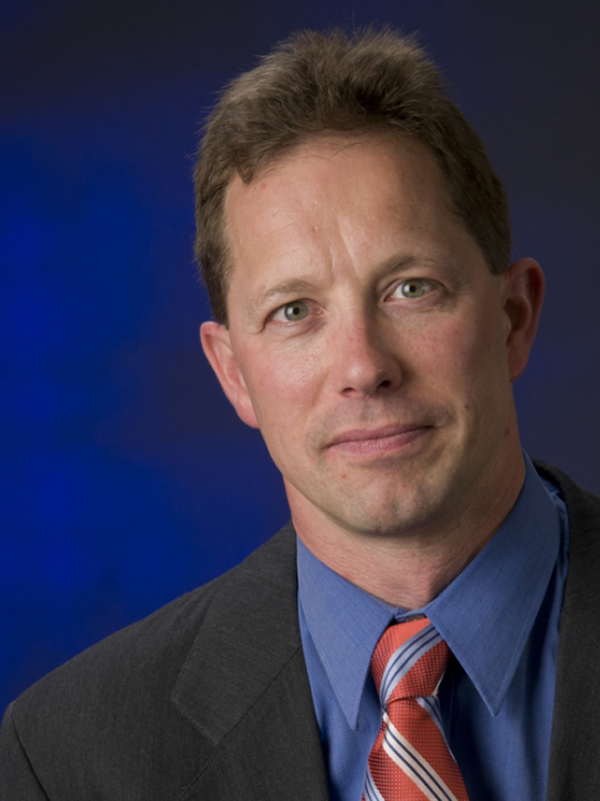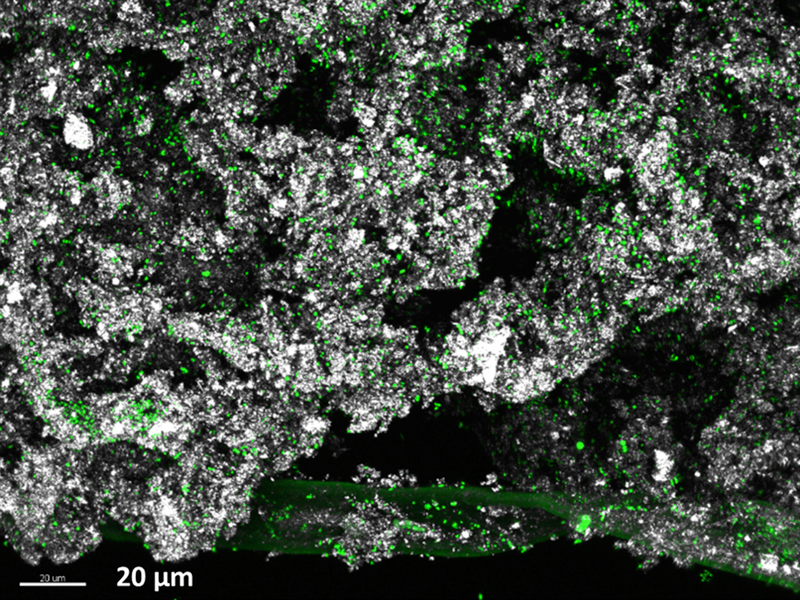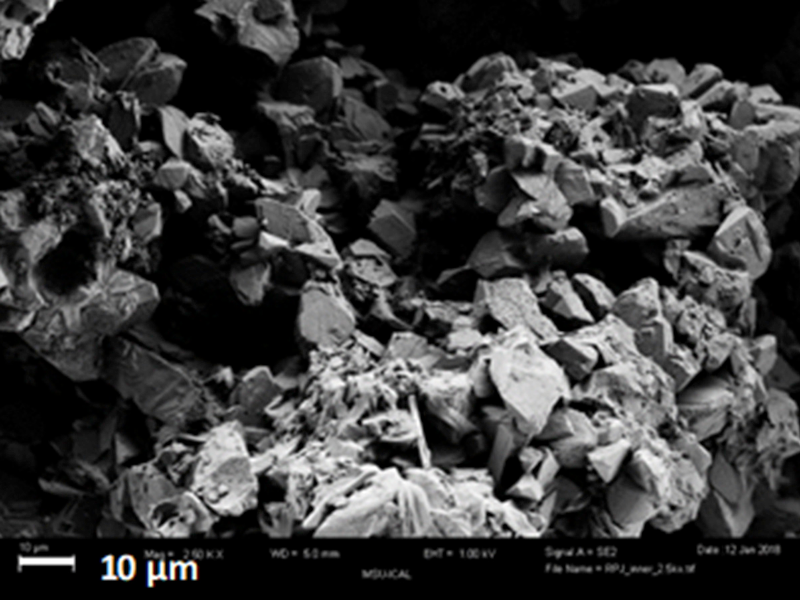Dr. Robin Gerlach

Name and Position:
Robin Gerlach (Ph.D.)
Professor
Chemical and Biological Engineering
Center for Biofilm Engineering
Thermal Biology Institute
Energy Research Institute
What are your central research questions?
My research interests are in the area of biofilms and biotechnology development with a focus on bioenergy, biomaterials, and environmental applications, such as bioremediation. The overarching research question is how to maximize the beneficial potential of microorganisms, and minimize their potential detriment, for society.
My research group currently focuses on two major areas:
- How to optimize the use of microorganisms for the development of biology- and geology-inspired approaches for construction, material development, environmental remediation and medicine.
and
- The development of technologies for producing algal biofuel through the use of extremophilic algae, with an emphasis on the cultivation of algae using low quality nutrients and water, such as wastewater, and under high pH/high alkalinity conditions to reduce the need of co-location of algal growth facilities with CO2 point sources as well as optimizing the algal microbiome for improved biomass productivity.
What motivates or inspires your research?
The desire to tap into the seemingly endless potential of microorganisms to promote chemical reactions, which can be used for societal benefit, at ambient temperatures.
What is your academic background, and what professional development prepared you to do this research (i.e., what advice to young scientists who might be interested in pursuing this research as a career opportunity?)
I have a Diplom-Ingenieur (equivalent to a Master of Science) degree in Environmental Science and Engineering from the Berlin Institute of Technology (Germany), performed some of my research at Rice University (Houston, TX, USA) and obtained my Ph.D. degree through the Civil Engineering Department at Montana State University working at the interdisciplinary National Science Foundation Engineering Research Center Program funded Center for Biofilm Engineering. I have always strived to work collaboratively with fundamental scientists and engineers simultaneously to combine the strengths of fundamental and applied science. Their combination results in something greater than the simple sum of the two parts. Inter- and multi-disciplinary research and development activities have immense potential to solve society’s grand challenges.
What are some of the key research findings, and what is their significance and application?
Biomineralization is an essential process for life on earth, including the growth of bones, teeth, shells, etc. but also in the microbial world. The activity of microbes can be harnessed to precipitate and dissolve a wide range of minerals. Controlling their abilities for benefit will allow for the development of cements with reduced CO2 footprint, soil stabilization, the sealing of leaking oil and gas wells, new materials, the treatment of medical conditions, including bone regeneration and kidney stone treatment, and much more.
Algal biofuels and bioproducts have the potential to reduce the net CO2 output (e.g. per mile driven) compared to petroleum-based fuels. There are many algae with potential for biofuel and bioproduct generation. The high pH-high alkalinity cultivation approach we are pursuing allows the decoupling of algal growth facilities from CO2 point sources such as fossil fuel-powered heating, energy or cement plants. Instead, algal growth facilities can be built where climate, land and water availability are appropriate for algal biomass production. The same amount of CO2 will be fixed by the algae (e.g. per gallon of fuel produced), just from the atmosphere instead of from a high concentration flue gas streams.
Dr. Gerlach has co-authored more than 95 peer-reviewed publications (h-index 41, google scholar).
What is the funding source for this research?
Dr. Gerlach is currently funded through the National Science Foundation, the Department of Energy (BETO and NETL), Department of Defense, NASA, private foundations and the State of Montana.

A 2D projection of a combined reflection and fluorescent image from the confocal microscope shows cells (SYBR Green I) in association with mineral precipitation. Scale bar is 20 μm. Image by Sobia Anjum, image analysis by Betsey Pitts.

FE-SEM image of the mineral scale which accumulated on the surface of the pup joint downhole in the subject well after rinsing with 1% HCl solution. Material collected from the inner region of the scale shows angular crystals consistent with calcite and amorphous mineral forms.
Please provide a few recent publications that resulted from your research done at ICAL.
- Corredor, L.; Barnhart, E. P.; Parker, A. E.; Gerlach, R.; Fields, M. W. (2021): "Effect of temperature, nitrate concentration, pH and bicarbonate addition on biomass and lipid accumulation in the sporulating green alga PW95." Algal Research 53. DOI: j.algal.2020.102148
- Zambare, N.M.; Naser, N.Y.; Gerlach, R.; Chang, C.B. (2020): Mineralogy of Microbially Induced Calcium Carbonate Precipitates Formed using Single Cell Drop-Based Microfluidics. Nature Scientific Reports. 10: 17535.DOI: s41598-020-73870-y
- Kirkland, C, Hiebert, R, Hyatt, R, McCloskey, J, Thane, A, Cunningham, A, Gerlach, R, Kirksey, J, Spangler, L, Phillips, AJ. (2020): Addressing wellbore integrity and thief zone permeability using microbially-induced calcium carbonate precipitation (MICP): A field demonstration. Journal of Petroleum Science and Engineering. 190, 107060. DOI: 10.1016/j.petrol.2020.107060
- Skorupa, D.J.; Akyel, A.; Fields. M.W.; Gerlach, R. (2019): Facultative and anaerobic consortia of haloalkaliphilic ureolytic micro‐organisms capable of precipitating calcium carbonate. Journal of Applied Microbiology 127, 1479-1489. DOI 10.1111/jam.14384
- Hobbs, T.; Schultz, L.N.; Lauchnor, E.G.; Gerlach, R.; Lange, D. (2018): Evaluation of Biofilm-Induced Urinary Infection Stone Formation in a Novel Laboratory Model System. Journal of Urology. 17:77380-6. DOI: 10.1016/j.juro.2017.08.083
And others
